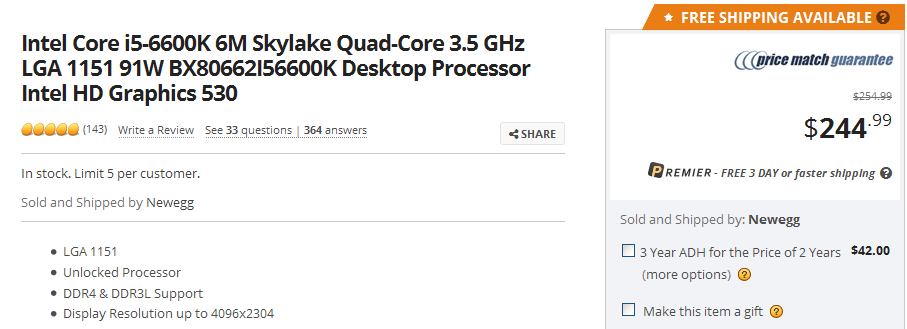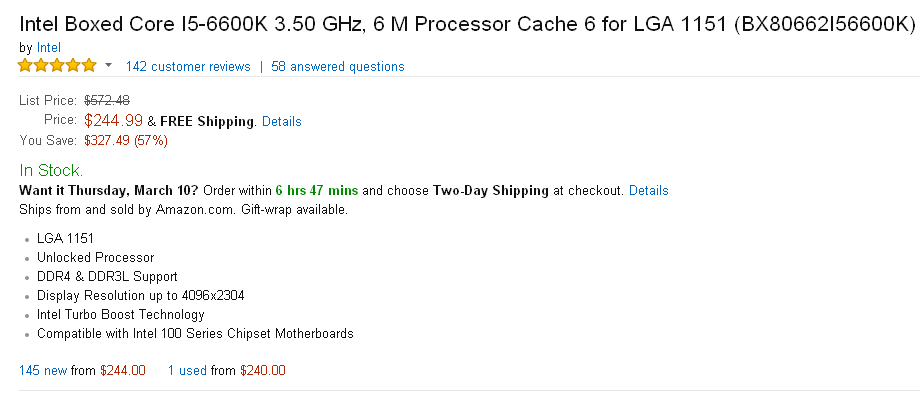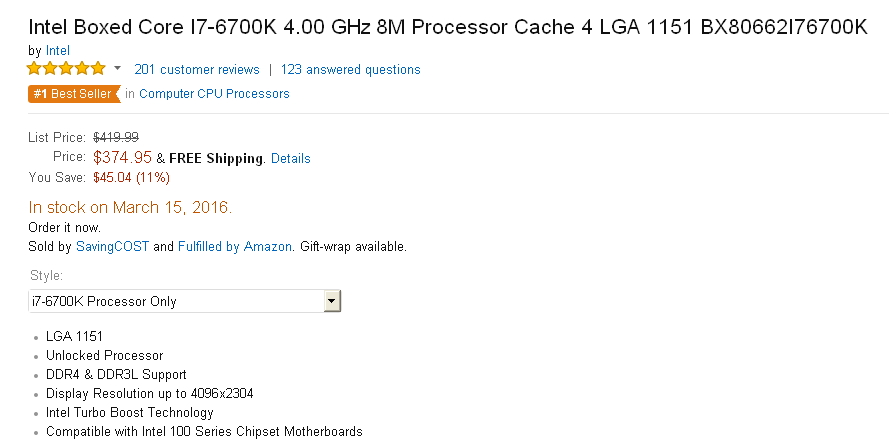I saw an interesting New York Times article today on the topic of list prices; an excerpt follows:
The perception of a bargain is fostered by online retailers’ use of something variously labeled list price, suggested price, reference price or manufacturer’s suggested retail price. Whatever its name, the implication is that people are paying much more somewhere else.
But with many products online, you could not pay the list price even if you wanted to. That is because hardly anyone is actually charging it. It is a sales tactic that is drawing legal scrutiny, as well as prompting questions about the integrity of e-commerce. If everyone is getting a deal, is anyone really getting a deal?
It's true; on a lot of items it's rare to find it selling at the list price anywhere. I'd somewhat accepted it as a thing to be aware of when shopping online; if you're paying list price, you should be aware that it's probably selling for less elsewhere,.
Out of curiosity, I looked up an item that I knew had been selling for above release price due to high demand and limited supply, namely the Intel Core i5 6600k processor, for which Intel has a recommended customer price of $243. While officially this is the price-per-thousand for Intel partners, previous comparable processors typically sold for around that price when released, and less as they aged. What were the likes of Amazon and Newegg listing as the list price when an item had been selling for more than the manufacturer expected? Would Amazon list a price of $243 $270 (Save -11%!)?
Newegg showed a list price of $255 (note all prices may have changed since publication), while selling for $245.

Not really sure where they got the $255 figure from, but regardless, Amazon made that look positively tame:

A $572.48 list price! If you're familiar with processor pricing, this immediately jumps out as outrageous. But even if you're not, all it takes is a look at Amazon's own page for the next-higher-up model to show the list price is completely made-up:

The next-higher-up model sells for $375 instead of $245, but its list price is $419.99 instead of $572.48. Although even there, Intel's recommended customer price $350, less than both actual retail and Amazon's supposed list price.
It wasn't until I did my own check that I realized how point-on the article was about list prices at times being completely out of the blue. Amazon's own statement on list prices reads:
Except where noted otherwise, the List Price or Suggested Price displayed for products on any Amazon Service represents the full retail price listed on the product itself, suggested by the manufacturer or supplier, or estimated in accordance with standard industry practice; or the estimated retail value for a comparably featured item offered elsewhere.
I suspect that in the case of the i5-6600k, an algorithm was calculating its "list price" based on discounts applied to other, older, processors, as it's not rare to see significant discounts on hardware that is several years old. Afterwards, however, either no human checked the list price, or if so, they weren't familiar with industry pricing and didn't flag the list price as suspicious. When you're selling as many products as Amazon, a lot of these pricing processes will be automated - it likely isn't altogether different from the (third-party) algorithms that led to a $23 million book on flies being available for sale on Amazon.
Return to Blog Index